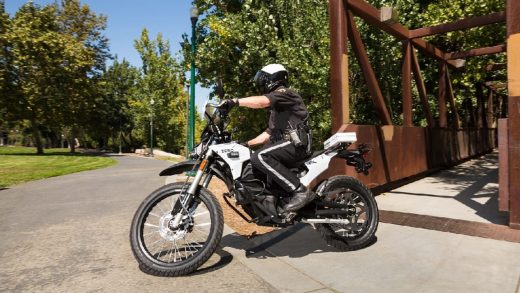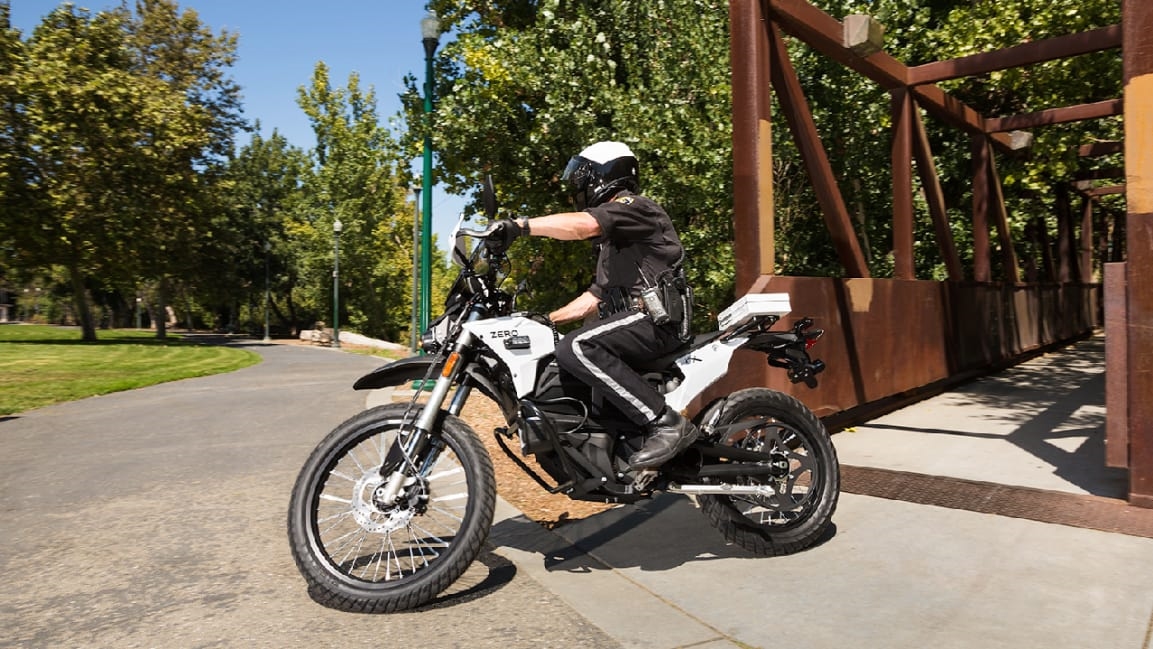From Zero to sixty: How an electric motorcycle startup is winning over police departments
By Jed Gottlieb
Richard Ashcraft grew up strapped to the back of his dad’s off-road motorcycle, sometimes literally lashed to his father in case he nodded off. A 20-year veteran of the Clovis Police Department in California’s Central Valley, Cpl. Ashcraft got his motorcycle license before his driver’s license. He knows how to ride.
But even he was confused by the simplicity and quiet of Zero’s electric motorcycle when he started using it on patrol.
“The Zero doesn’t make a sound and if you forget it’s on, which I have done before, you could grab the throttle and right away you’d take off down the street,” Ashcraft says with a laugh. “They take a little getting used to.”
Once he became accustomed to the cycles–the Clovis PD uses Zero’s DSP model–Ashcraft fell in love with them. The dual-sport models can handle on- and off-road terrain and use a 100-percent-electric powertrain that is whisper quiet, cool to the touch, exhaust free, and virtually maintenance free–no gears, clutch, transmission, or fluids, so no oil changes. They allow officers to accomplish things they can’t do on big, rumbling gas cruisers.
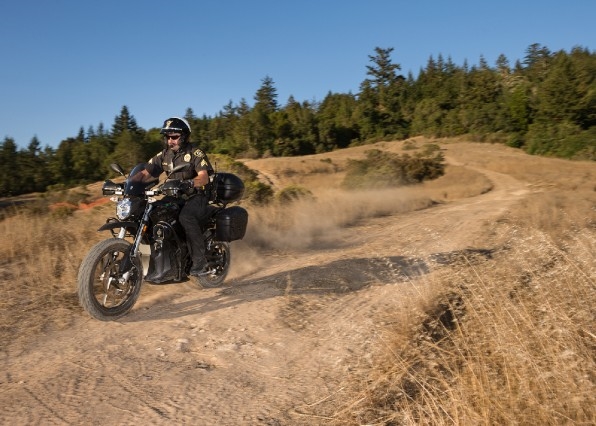
“It makes it easy to jump up on curbs or pass through fields or orchards or whatever we might encounter in our area,” Ashcraft said. “They’re so quiet you can sneak right up on someone in an alley selling drugs or doing anything else illegal… They have really changed how we patrol.”
Five years ago, the Santa Cruz-based Zero, which leads electric motorcycle sales in the United States, began producing a cycle for law enforcement, cutting into the share of the iconic Harley Davidson. Over that time, 125 departments in 25 states and two Canadian provinces have bolstered their fleets with Zeros. Company sales director Kevin Hartman estimates that Zero adds two new departments a month and expects that rate to increase.
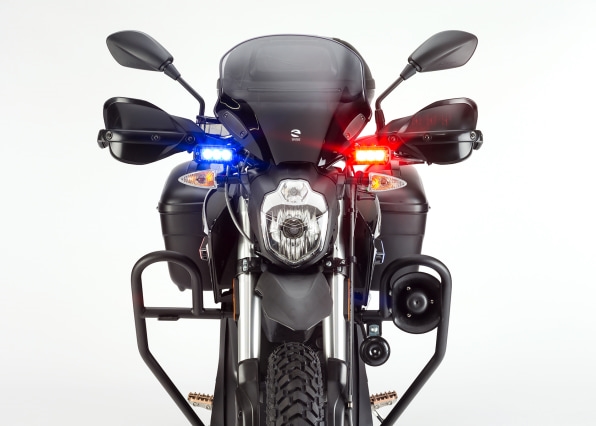
“In 2011 and 2012, a couple of departments bought our civilian motorcycles and put their own lights and sirens on them and we suddenly saw a real interest,” Hartman said. “In 2013, we decided to go after the market and developed our own police product. The nice thing is the law enforcement community is pretty tight-knit so it’s a little easier to get recognition in that space compared to in large global civilian market.”
Zero’s move represents a huge success for the small company, whose bikes retail for $8,500 to $16,500. But, despite Harley-Davidson’s double-digit drop in Stateside sales over the third quarter in 2018, the iconic American brand remains far-and-away the industry’s dominant player. Harley estimates it supplies motorcycles to as many as 4,000 law enforcement agencies–around 80% of the U.S. market share.
Harley still dominant, despite Trump’s call for boycott
In August, President Trump called for a Harley boycott after the company’s CEO said White House tariffs could force some production overseas. It could have been an advantage for Zero or other gas-powered brands. Instead, the Secret Service ordered more Harleys. According to the September purchase order, the Service made the call to maintain a “consistency of appearance, performance, training and parts with the currently existing motorcade motorcycle fleet.” Translation: It costs time and money to switch out vehicles that agents and mechanics already know how to use and maintain.
This is a familiar story–new technology can be a hard sell to government agencies. And Zero’s tech and feel offers a radically different experience than that of Harley, or Honda, or BMW. The electric cycles recharge as they break, so stop-and-go city driving mileage estimates for their police bikes run between 150 and 200 miles on a single charge. But flying down the highway at 90 mph, their sustained top speed, will run down the battery in about 60 miles. They are also tiny compared to Harleys–at about 450 pounds, Zero’s popular law enforcement offering, the DSRP, comes in at half the weight of Harley’s police Road King.
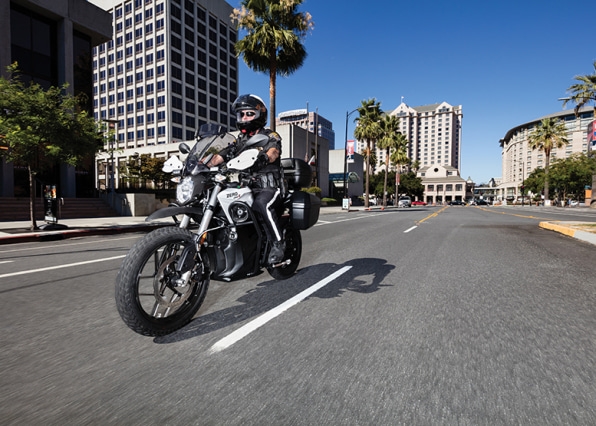
Sgt. Robert Schwalm, who tests cycles for the Michigan State Police Precision Driving Unit, says you won’t see highway patrols switching to Zeros anytime soon.
“Other than the fact that you are balancing on two wheels, they are very different motorcycles,” Schwalm says. “We need to go from stop to 110 miles per hour and back to a full stop all day long to do our business every day. The Zero’s not a motorcycle for that.”
So instead of going toe-to-toe against the brand, Zero found its niche between the state troopers on hogs and neighborhood officers on mountain bikes.
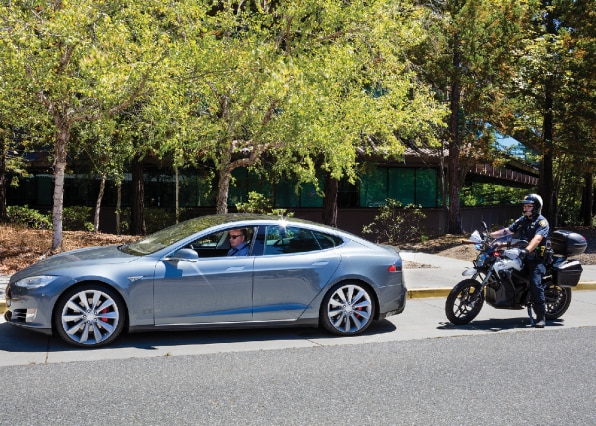
“We aren’t going after those frontline motorcycles like the Harleys,” Hartman said. “We have positioned ourselves as another tool for law enforcement.”
Like Clovis, big cities such as Los Angeles like Zeros because they provide a tactical advantage thanks to their silent-running, off-road capabilities. But departments have found all kinds of creative uses for them. Without the roar of a gas bike, they make formerly tricky jobs simple, such as enforcing texting while driving prohibitions or seatbelt laws. They are ideal for policing parks, college campuses, stadium parking lots, or even stadiums themselves–no emission fumes, so officers can cruise around indoors. And in California, where there is a greater scrutiny on emission standards, government grants have aided departments such as that in Clovis in adding Zeros to their fleets.
Building a new generation of riders
But Zero won’t be operating in this virgin space for long. Last week at the Milan Motorcycle Show, Harley introduced its first electric product, LiveWire. Due for release next year, the smaller, sleeker bike is key part of Harley’s strategy to build a new generation of riders–the company’s typical rider is in their 50s.
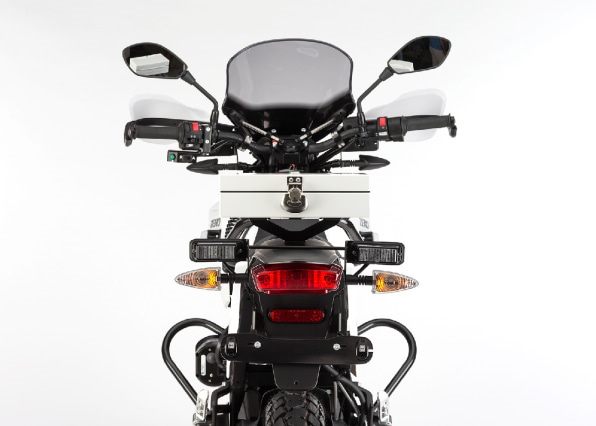
“We have to breathe life into the sport of motorcycling and this helps us do it,” says Marc McAllister, Harley’s vice president of product planning and portfolio. “LiveWire as it comes to market next year might not be the right way to deliver an electric to law enforcement. But LiveWire is just the first of many electric vehicles that we plan to bring with a portfolio approach.”
“We will look at where we can broaden the use of electric vehicles, and certainly fleet motorcycles for law enforcement and emergency services are one of those spaces,” he added.
Harley has been struggling as ridership in the States continues to decline but has an aggressive strategy to win new customers–the company plans to develop dozens of new products in the next few years. But after 13 years and nearly 200 million dollars spent developing its technology, Zero welcomes Harley and any other company’s electric offerings.
“The entrance of more competitors will force us to get better, but more importantly, it will bring a lot of attention to the electric market that is really hard for us to generate on our own,” Zero CEO Sam Paschel says. “The motorcycle market is large enough that if we captured even one percent of it we would be a wildly successful brand.”
Clovis’s Cpl. Ashcraft doesn’t consider Zero just a novelty–he says his department’s seven bikes have become essential enforcement tools. But their novelty does generate buzz. He says people constantly approach officers wondering who makes the bikes and how they work. Richard Duprey, a former police officer who has written about the motorcycle industry for years, thinks that curiosity will be key to Zero becoming a major player.
“The market wants smaller, simpler products,” Duprey says. “Zero could find that market with people looking for Vespas or small bikes. And having people see officers riding them could give them some traction. There should be a snowball effect that gets them into the mainstream.”
Fast Company , Read Full Story
(53)

